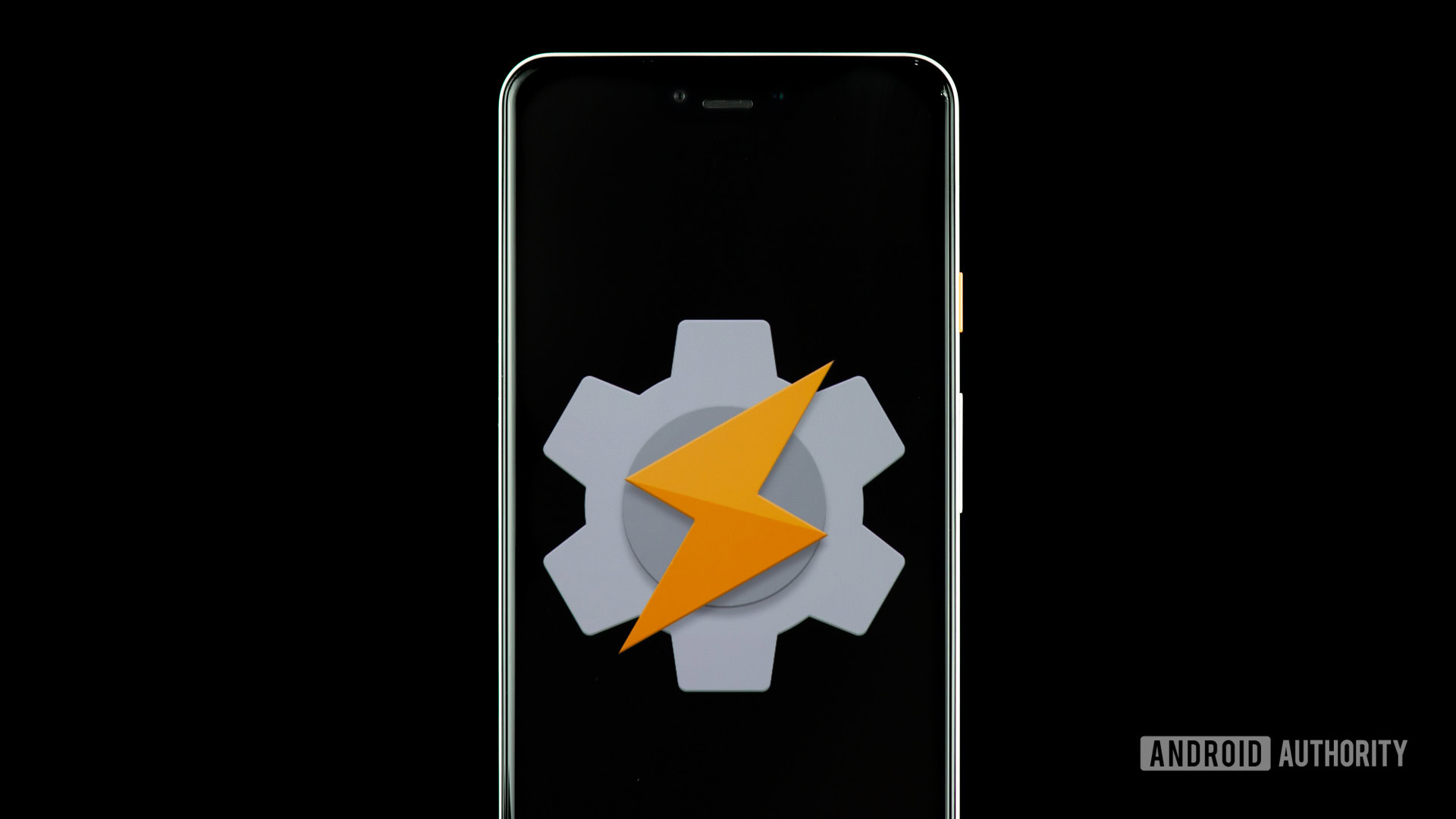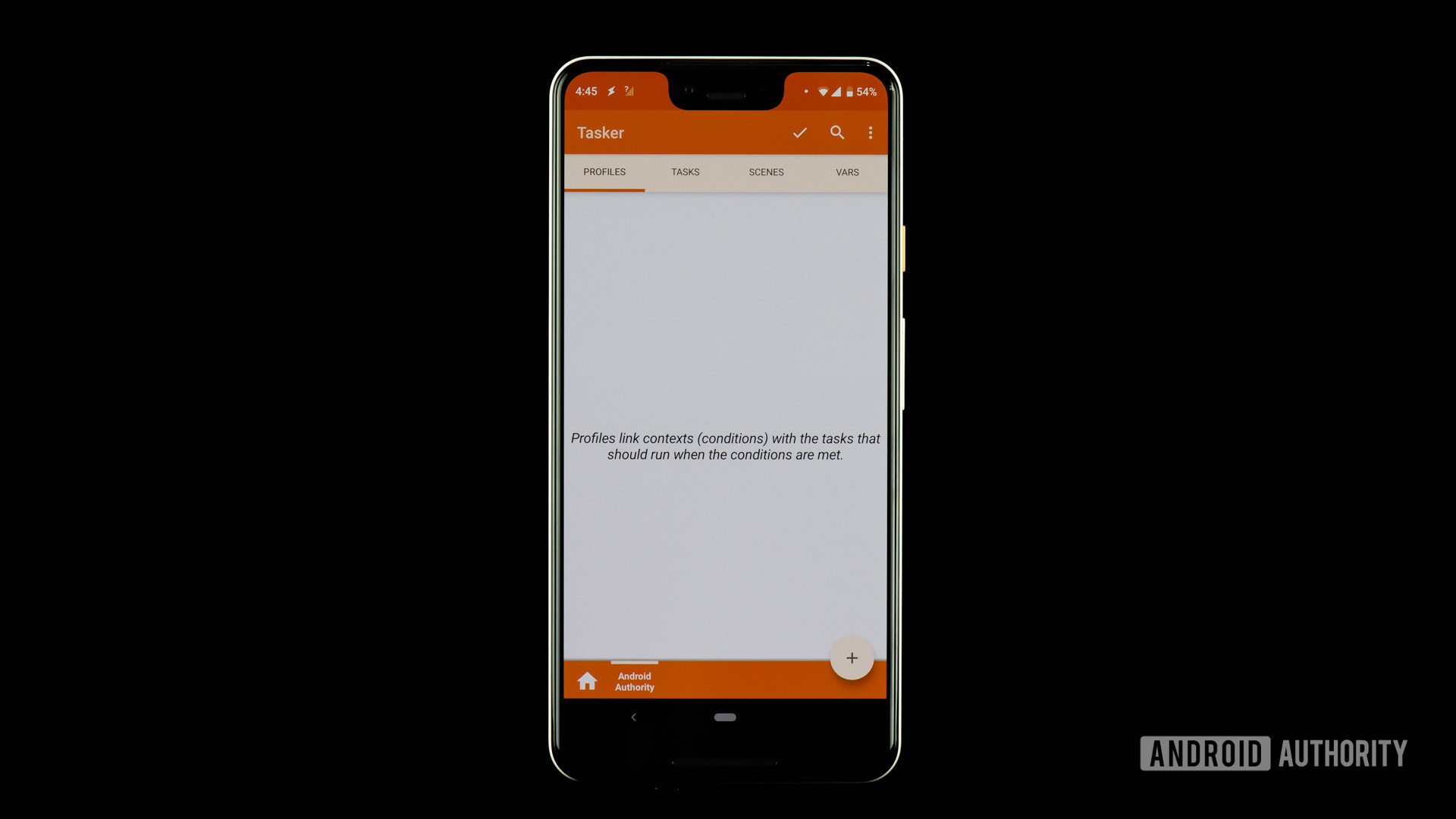Affiliate links on Android Authority may earn us a commission. Learn more.
How to use Tasker to take Android to the next level
Published onJuly 5, 2022

Most people describe Tasker as a task control and automation app. I see an Android programming app for the masses. Instead of scaring you with code lines, this tool lets you use a friendly interface to create mini Android apps that do your bidding.
Learning how to use this tool exhaustively is beyond the scope of this post. Instead, we’ll go over the basics of using it to program your Android device to do what you want according to the rules you specify. Let’s get started.
Also read: The 15 most useful apps for Android
QUICK ANSWER
Tasker is a complex app, but you can master it with a bit of guidance. We'll help you understand the UI, permissions, profiles, tasks, scenes, and variables. Additionally, we can help you set up some fun Tasker apps, or guide you through the simplified Tasky mode the app now offers.
JUMP TO KEY SECTIONS
Figuring out Tasker’s UI
Tabs

The app has been optimized for simple navigation, and the UI is very clean. There are four tabs at the top of the interface: Profiles, Tasks, Scenes, and Vars (short for variables).
- Profiles — Some sort of container or package for contexts and linked tasks. You can define several contexts for a single profile, and all those conditions must be true for the linked tasks to run.
- Tasks — A group of actions. Usually linked to a trigger or context, but can also be a free-floating, standalone task executed manually.
- Scenes — A custom-made user interface. You can create your layout of buttons, menus, pop-ups, and other UI elements.
- Variables — A name for an unknown value that can change over time, like the battery level or the date.
Projects
You can create Project tabs, which essentially work as folders for organizing profiles, tasks, scenes, and variables. These will be displayed along the bottom of the UI, next to that lonely home button icon.
These are simply a way to keep things in order within the app. You could create projects for email commands, location settings, vacation time, or whatever you wish.
Main menu
The main menu button is located in the top-right corner. Tap it to display all settings and options. It can get pretty confusing, so try not to play too much with it at first. We will use it briefly in the next section, so don’t go playing with it just yet.
Set up permissions and grant access
Tasker has the power to control your phone extensively, but you must first give it permission. Make sure the app can do everything you want it to from the get-go, as the pop-ups and access requests can get annoying.
- Open Tasker.
- Hit the three-dot menu button.
- Select More.
- Tap on Android Settings.
- You will be presented with a list of settings. Go through each one and make sure the app has access to everything.
Of course, you can always choose not to give access to specific things, but that will affect the app’s functionality.
Profiles and tasks
In a nutshell, profiles determine when you want Tasker to do something, while tasks dictate what to do.
It may also help to think of a task as a sequenced list of things to do. For instance, you may want to set up a night mode. This could force the phone to go into Do Not Disturb, lower the brightness, and turn off unnecessary features (GPS, Bluetooth, and more) at a particular time.
In this situation, you would use a profile to tell the application when to activate this night mode. You can then set up actions in the tasks section.
Creating a profile and task
To illustrate the concept of tasks and actions more clearly, let’s try actually creating this night mode task.
Create a new profile:
- Open the Profiles tab.
- Tap on the + button.
- You’ll get to pick the trigger action. Pick Time and select the times you want Night Mode to start and end.
- Name your profile. I will call this one “Night Mode.” Just tap where it says New Task to enter a new name.
- Hit the Back button.
Create a new Action:
- You will enter the ‘Task Edit” page. Press the + button to create an action.
- Select Audio.
- Select Do Not Disturb.
- The ‘Mode’ section will allow you to set your specific preferences. You can let alarms or priority contacts come through, for example.
- Hit the back button. Now your first action has been created. On to the next one.
- Tap on the + button again.
- Select Display.
- Select Display Brightness.
- Under ‘Level,’ select your desired brightness. Then hit the back button again.
- For the following action, we will turn off GPS. Simply hit the + button again.
- Select Location, then select Stop Location.
- To turn off the Bluetooth, we simply press the + button, select Net, select Bluetooth, and set the option to Off.
- Hit the back button and your night mode is ready!
This is the basic way to automate actions on your phone using Tasker. It’s just the tip of the iceberg, though. You can tell the app to interact with other apps, show notifications with custom messages, use location to launch tasks, and much more.
Our idea is to show you how this application functions. For more advanced automation, you can always search the internet or simply come up with your own tasks and profiles! We have also provided links with custom tutorials at the end of this post.
Importing and exporting
To import a saved task into Tasker, tap the Tasks tab, select Import Task from the menu, browse for the file, and tap on it. Importing profiles, scenes, and projects works the same way. To export a task, long-tap on the task name, tap on the menu button, and select Export. Again, exporting other elements works the same way.
How to delete a profile, task, or scene
To delete a profile, task, or scene, long-tap on the name, then tap the trash icon. For variables, the trash can is replaced with an X button.
Rearranging actions in a task
To move an action up or down a list of actions, just tap and hold on the action’s icon at the rightmost side of the action name, then drag and drop the action name to its new location.
Running a task manually
Open the ‘Tasks’ tab. Tap on the task. Tap the play button at the bottom of the screen. This is good for testing whether your tasks actually work.
Scenes

Scene creation is an advanced topic that deserves its own separate tutorial, but I’ll briefly talk about it here.
A scene is a custom user interface you build from scratch. It can use elements you usually find on UIs, including buttons, doodles, images, maps, menus, shapes, sliders, text boxes, text input fields, and web viewer boxes. Each element is customizable.
Variables
If you’ve ever done some programming before, you’ll be familiar with the concept of variables. They’re close kin to the variables you hear about in algebra class. To define it simply, a variable is a name for a value that changes over time.
Just like scene creation, variables are also complex topics that deserve their separate tutorials. I’ll talk briefly about them though, just so you know what immense power you’ll get if you just patiently climb the steep hill of learning how to use Tasker.
Variables always begin with the percent (%) symbol. Variables in all uppercase are built-in variables. They are usually derived from system information, device states, or events. Some common examples are %TIME (current time), %DATE (current date), %BATT (current battery level), and %WIFI (whether Wi-Fi is enabled or not).
Aside from built-in variables, there are two other variable types: local and global. Both are user-defined and user-created. The main difference between them is that local variables can be used only within the task or scene in which they are created, defined, or used; global variables are accessible to all of Tasker. Another main difference is in capitalization: local variables use all lowercase, but global variables have at least one uppercase letter in their name.
Some awesome Tasker projects to try out
- Android customization — Device security, intrusion detection
- Voice-activated camera control using Tasker and an Android Wear smartwatch
- Android customization — remote camera trigger with Android
- Backup your SMS, MMS, and call log automatically — Android customization
- How to create custom, actionable notification on your home screen — Android customization
- How to create an advanced battery log — Android customization
- Build real-time battery drain warnings — Android customization
- Selfie message board — Android customization
- Schedule a delayed SMS message — Android customization
- Create your voice-activated reminders — Android customization
Check out Tasky
Is all of this Tasker stuff way too complicated? We understand the feeling, and so does the developing team. This is why the publisher has created Tasky, an alternative simplified mode within the app. Tasky makes using Tasker Routines way easy. All you have to do is search for a filter or filter category, download the Routine, and enable it.
How to enable Tasky Routines:
- Open Tasker.
- Tap on the three-dot menu button.
- Tap on Switch To Tasky.
- Look through the available Routines or search for one.
- When you find your Routine of preference, tap on the Download icon.
- You might be asked to grant it permissions. Do so.
- You can now see your Routines. Toggle each on to enable it, or off to disable it. You can also tap on the Trash icon to delete it, or tap on the + button to add new ones.
And that’s it! No need to go through complicated menus or figure out annoying settings.
FAQs
Tasker is not free. The application costs $3.49. This is a one-time purchase price, and you won’t need to spend any more on in-app purchases.
Since the purchase is made through the Google Play Store, you can re-download it to any Android device with your same Google account.
Tasker offers a seven-day free trial without the need to pay anything upfront. The only issue is that you can only get it if you’re willing to sideload the app. You can install the APK file manually, which can be downloaded here.
Tasky is a simplified, easy mode available from the Tasker app. Tasker is very useful, but setting it up can be very confusing and complex. Tasky is for those who are less tech-savvy and need an easy way to automate intelligent functions.